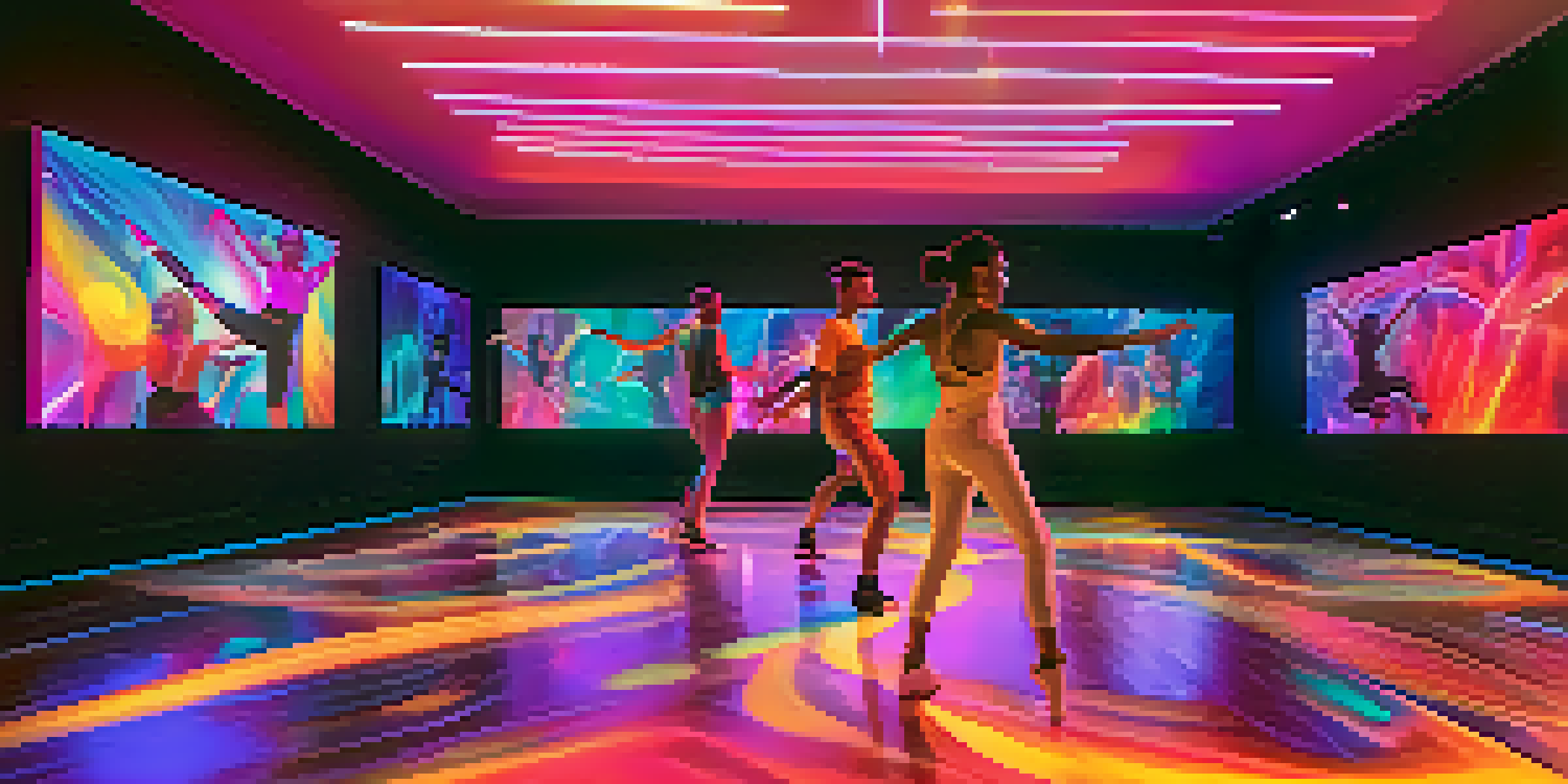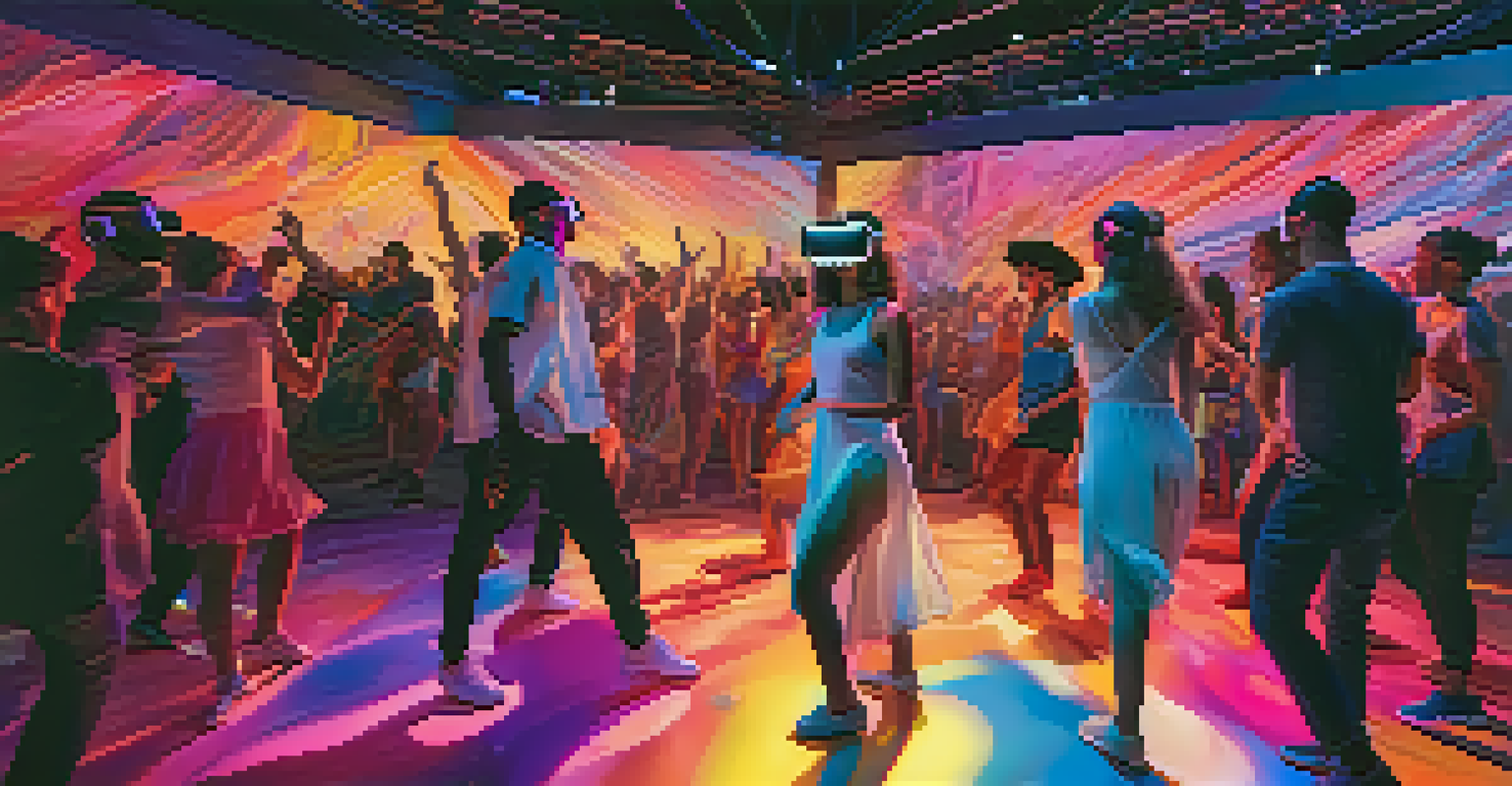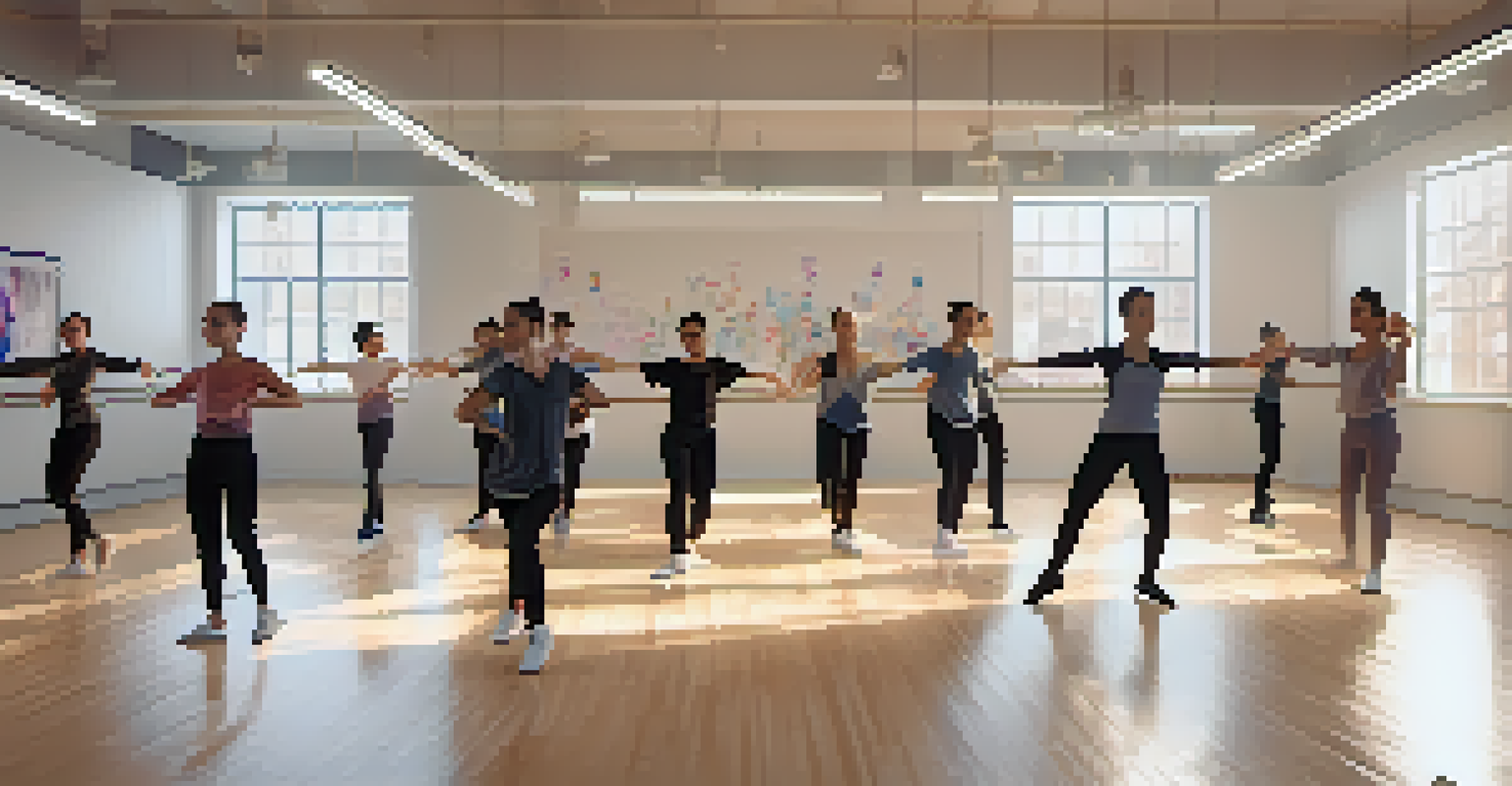Virtual Reality and Dance: Bridging the Gap Between Worlds

Introduction to Virtual Reality and Dance
Virtual reality (VR) is revolutionizing how we experience art, particularly dance. By immersing audiences in a digital environment, VR transcends the limitations of traditional performance spaces. This technology not only enhances the viewing experience but also opens up new avenues for dance creation and collaboration.
The future of dance is not just about the movement; it's about the experience we create around it.
Imagine stepping into a world where you can dance alongside your favorite performers or even become a part of the choreography. With VR, this dream is becoming a reality, allowing viewers to engage with dance in ways that were previously unimaginable. The blend of movement, sound, and virtual environments creates an interactive experience that captivates audiences.
As we delve deeper into this topic, we will explore how VR is bridging the gap between the physical and digital realms of dance. From choreographers experimenting with virtual stages to audiences experiencing performances from unique perspectives, the fusion of these worlds is truly transformative.
The Evolution of Dance in Virtual Spaces
Dance, like any art form, evolves with the times, and technology plays a crucial role in this evolution. Historically, dance has been influenced by various mediums, and now VR is at the forefront of this transformation. Choreographers are able to use VR to visualize and experiment with new movements and styles in a virtual space, pushing creative boundaries.

For instance, consider a choreographer who is working on a piece that incorporates elements from different cultures. In a VR environment, they can easily integrate various backgrounds and settings, allowing for a richer, more immersive storytelling experience. This not only enhances the choreography but also allows for deeper exploration of themes and emotions.
VR Transforms Dance Experiences
Virtual reality immerses audiences in dance, allowing them to engage with performances in unprecedented ways.
As VR technology continues to advance, we can expect even more innovative approaches to dance creation. Artists are starting to view virtual spaces as an extension of their performance art, where the possibilities are endless, and creativity knows no bounds.
Creating Immersive Dance Experiences
One of the most exciting aspects of VR in dance is the ability to create immersive experiences for audiences. Viewers can don a VR headset and find themselves in a vibrant, animated world where they can interact with dancers and their surroundings. This level of engagement fosters a deeper emotional connection to the performance.
Virtual reality is the next frontier for artistic expression, transforming how we interact with art forms like dance.
For example, a VR dance piece might allow participants to influence the choreography by moving within the space, effectively becoming part of the performance themselves. This interactivity not only enhances enjoyment but also encourages audiences to explore their own movement and expression, making dance accessible to everyone.
Such experiences are not limited to just watching; they invite the audience to participate actively, which can be especially appealing for those who might feel intimidated by traditional dance settings. By breaking down these barriers, VR is democratizing dance and inviting a wider range of people to engage with this beautiful art form.
Choreography Meets Technology: New Possibilities
The collaboration between choreographers and technologists is opening new avenues for dance. Artists are increasingly incorporating motion capture technology, which allows them to analyze and translate movements into the virtual space. This fusion of dance and technology not only enhances creativity but also fosters a new language of movement.
Consider a choreographer who uses motion capture to record their routine. This data can then be manipulated in a VR environment, creating unique visuals that highlight the intricacies of the dance. The result is a breathtaking blend of artistry and technology that captivates audiences and challenges traditional notions of performance.
Choreography Enhanced by Technology
The integration of motion capture and VR enables choreographers to explore new creative possibilities and redefine movement.
This synergy between choreography and technology is not just about creating visually stunning performances; it also encourages artists to rethink how they approach dance itself. With VR, choreographers can experiment with spatial dynamics and audience interaction in ways that were once impossible, paving the way for innovative storytelling.
Educational Benefits of VR in Dance
Virtual reality is not only transforming performance art but also revolutionizing dance education. In a VR classroom, students can learn from renowned instructors and experience diverse styles without geographical limitations. This accessibility broadens their horizons and inspires creativity in their practice.
For instance, a student in a small town can take a dance class with a celebrated teacher from another part of the world, all thanks to VR technology. This immersive learning experience allows students to observe and replicate movements in real-time, enhancing their technique and understanding of choreography.
Moreover, VR can provide feedback and performance analysis, helping dancers identify areas for improvement. By integrating this technology into dance education, we are not just teaching steps; we are fostering a new generation of artists who are well-equipped to navigate the evolving landscape of dance.
The Future of Dance in Virtual Reality
As we look to the future, the potential of virtual reality in dance seems limitless. With continuous advancements in technology, we can expect even more innovative experiences that blend physical movement with digital artistry. This evolution will likely lead to new genres of dance that we have yet to imagine.
Additionally, as the technology becomes more accessible, we may see a rise in community-driven VR dance projects. These collaborative efforts could empower local artists, allowing them to share their unique cultural perspectives while engaging audiences worldwide. The beauty of VR is its ability to connect people from different backgrounds and foster a sense of belonging within the dance community.
VR Revolutionizes Dance Education
Virtual reality breaks geographical barriers in dance education, allowing students to learn from top instructors around the world.
Ultimately, the fusion of virtual reality and dance is reshaping the future of this art form. By embracing these changes and exploring new possibilities, we can ensure that dance continues to thrive in both physical and virtual realms.
Conclusion: Embracing the Dance of Tomorrow
The intersection of virtual reality and dance presents an exciting frontier that is redefining how we engage with this art form. By merging technology with creativity, we are not only enhancing the way performances are experienced but also expanding the scope of what dance can be. This evolution encourages artists and audiences alike to embrace innovation and explore new dimensions of movement.
As we continue to witness the growth of VR in the dance world, it's essential to keep an open mind and be willing to adapt. This willingness to embrace change can lead to groundbreaking works that challenge our perceptions of dance and its role in society. In doing so, we celebrate the rich, dynamic nature of an art form that has always been about expression and connection.

So, whether you're a dancer, choreographer, or simply a dance enthusiast, the future holds exciting possibilities. Let's continue to explore and celebrate the amazing ways virtual reality is bridging the gap between worlds, bringing us closer to the heart of dance.